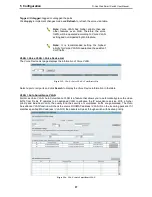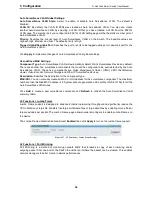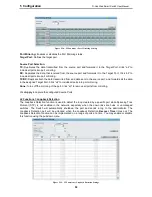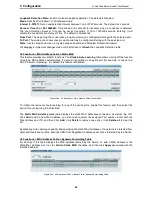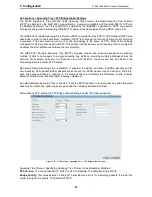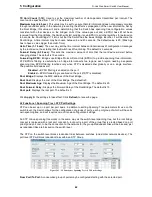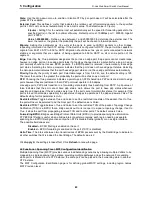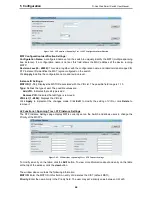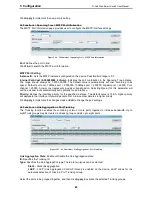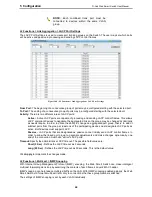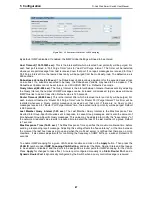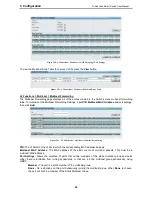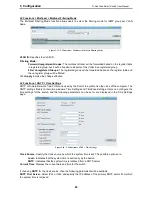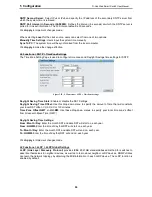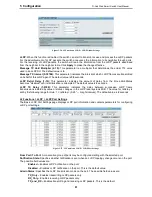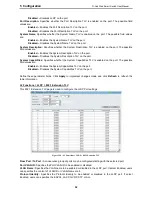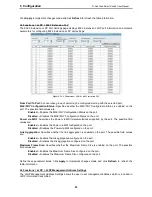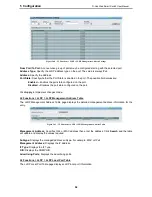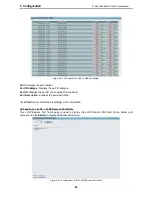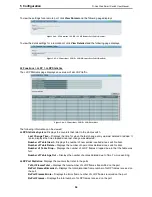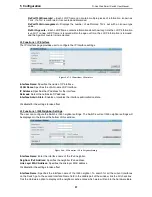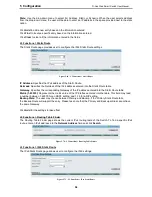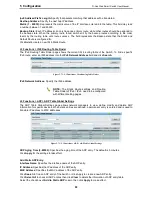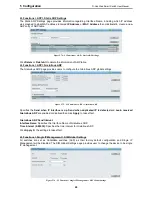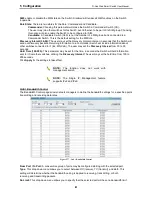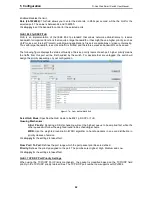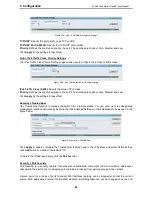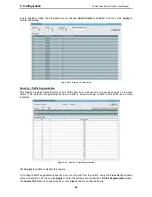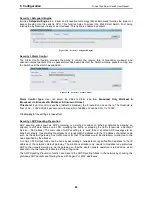
5 Configuration
D-Link Web Smart Switch User Manual
50
SNTP Second Server: Select IPv4 or IPv6 and specify the IP address of the secondary SNTP server from
which the system time is retrieved.
SNTP Poll Interval in Seconds (30-99999): Defines the interval (in seconds) at which the SNTP server is
polled for Unicast information. The Poll Interval default is 30 seconds.
Click Apply to implement changes made.
When selecting Local for the clock source, users can select from one of two options:
Manually Time Settings: Users input the system time manually.
Sync To PC: The system time will be synchronized from the local computer.
Click Apply to make the change effective.
L2 Functions > SNTP > TimeZone Settings
The TimeZone Setting Page is used to configure time zones and Daylight Savings time settings for SNTP.
Figure 5.55 – L2 Functions > SNTP > TimeZone Settings
Daylight Saving Time State: Enable or disable the DST Settings.
Daylight Saving Time Offset: Use this drop-down menu to specify the amount of time that will constitute
your local DST offset - 30, 60, 90, or 120 minutes.
Time Zone Offset GMT +/- HH:MM: Use these drop-down menus to specify your local time zone's offset
from Greenwich Mean Time (GMT.)
Daylight Saving Time Settings:
From: Month / Day: Enter the month DST and date DST will start on, each year.
From: HH:MM: Enter the time of day that DST will start on, each year.
To: Month / Day: Enter the month DST and date DST will end on, each year.
To: HH:MM: Enter the time of day that DST will end on, each year.
Click Apply to implement changes made.
L2 Functions > LLDP > LLDP Global Settings
LLDP (Link Layer Discovery Protocol) provides IEEE 802.1AB standards-based method for switches to
advertise themselves to neighbor devices, as well as to learn about neighbor LLDP devices. SNMP utilities
can learn the network topology by obtaining the MIB information in each LLDP device. The LLDP function is
enabled by default.


